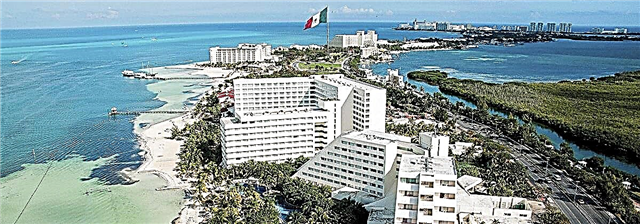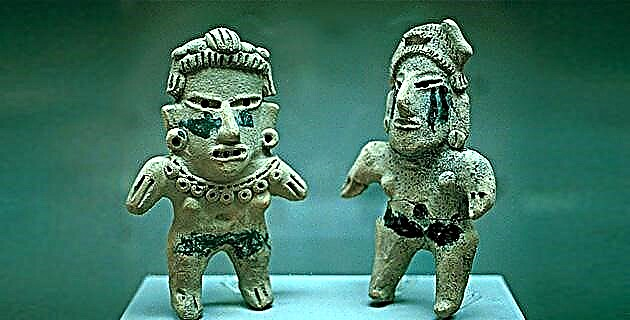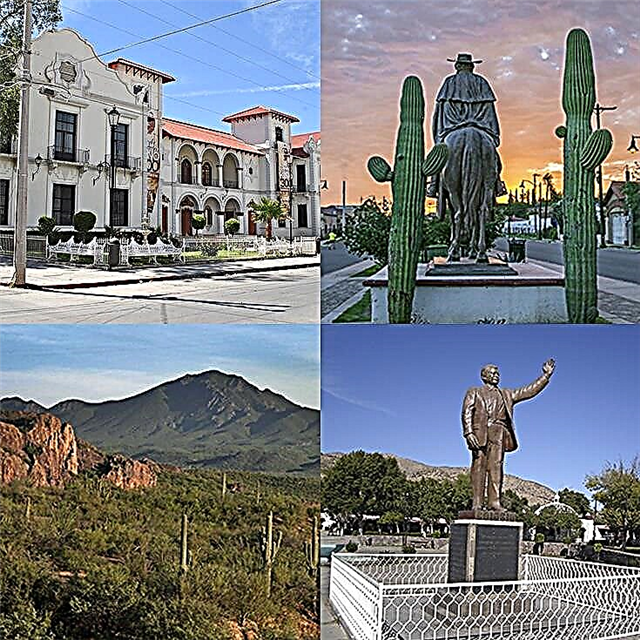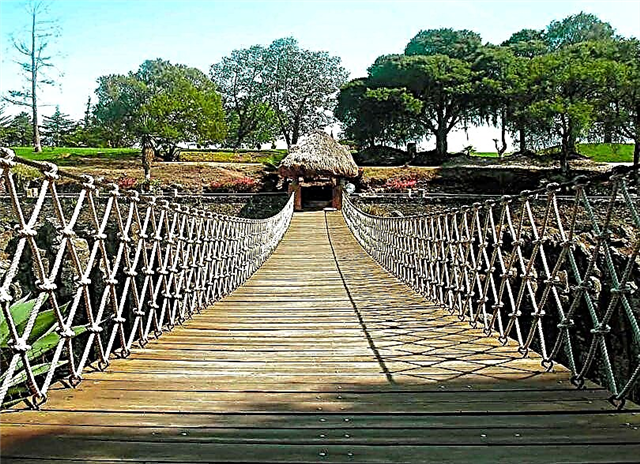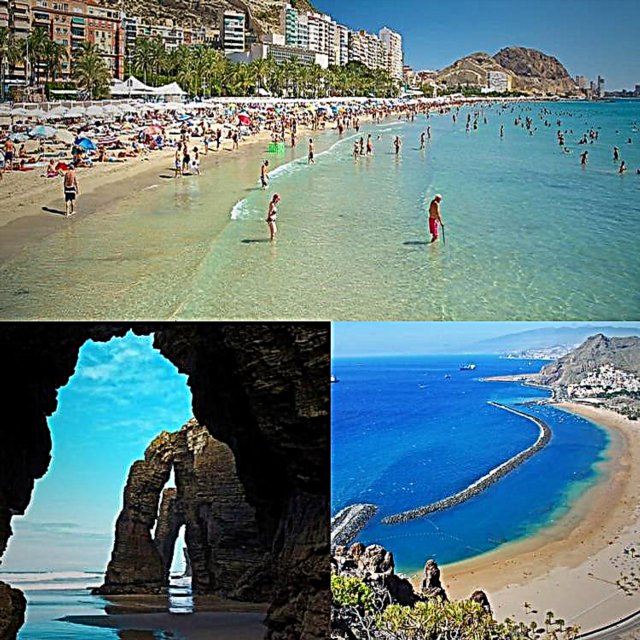The annual average is 80 tropical cyclones, with sustained low-level winds of more than 60 km / h, about a 66% of them reach an intensity greater than 120 kilometers per hour.
Unlike other systems of rotation that occur in the atmosphere, tropical cyclones have a warm central core that is developed in the middle part, being a necessary member for its formation and maintenance.
Satellites are an indispensable aid to locate these storms and follow their trajectory. In most cases, they have provided good estimates of the intensity of the cyclone. In recent years, international observation networks have also been expanded from various sources with information from ships, reconnaissance aircraft, island stations, atmospheric soundings and radars.
Thanks to this information, it is possible to obtain a fairly coherent general picture of the multitude of basic physical relationships that explain why tropical cyclones form, their unique structural characteristics in their changes in structure. In addition, there are dynamic and statistical models to predict its future behavior in the short term.
Cyclones are formed in the sea mainly when there are warm waters with sea surface temperatures greater than 26 ° C and a favorable pattern of winds blowing in the northern and southern hemispheres (trade winds) coalesce near the equator, occasionally originating low pressure centers. The wind in the surrounding area flows towards the low pressure and then increases the rise of the hot and humid air that releases water vapor.
The latent heat gained by the condensation of water vapor is the main form of energy. Once the upward movement of the air has begun it will be accompanied by the entry at the lower levels and by the corresponding exit at the upper levels. Under the influence of the Earth's force, the air converges, rotates, and begins to move in a circular fashion.
The evolution of the tropical cyclone is divided into four stages:
Tropical depression forms. The wind begins to increase on the surface with a maximum speed (average per minute) of 62 km / h or less, the clouds begin to organize and, the pressure drops to about 1 000 units (hectopascals).
Tropical depression develops. It acquires the characteristic of a tropical storm, since the wind continues to increase at a maximum speed between 63 and 118 km / h inclusive. The clouds are distributed in a spiral shape and a small eye begins to form, almost always circular. The pressure is reduced to less than 1 000 hpa. In this category a name is designated according to the list of the World Meteorological Organization.
Tropical storm intensifies. It acquires the characteristic of a hurricane, since the wind increases at a maximum surface speed of 119 km / h or more. The cloudy area expands obtaining its maximum extension between 500 and 900 km in diameter, producing intense rainfall. The eye of the hurricane whose diameter varies between 24 to 40 km is an area of calm free of clouds.
At this stage of maturity, the cyclone is graded using the Saffir-Simpson scale.
The strongest hurricane winds occur at low levels, which increases with the power of the order of two in the wind speed and for this reason they can be so destructive, where contact with the surface causes a strong dissipation by friction.
In the case of intensifying hurricanes, it is necessary that the inward, upward and outward circulation be greater than the dissipation due to friction, and in the case that they are in their weakening phase, this transversal circulation must be less than said. provision.
At the upper limit, the maximum intensity of the hurricane is determined by the temperature of the sea over which it forms and moves: the warmer the air in the boundary layer above it, the more the region of the eye wall can maintain a low pressure considering the stabilization that occurs in the upper levels.
While high-level temperatures show little variation in tropical regions, ocean temperatures show strong variations. This is the reason why the temperature of the sea surface is a crucial parameter in determining the location and the maximum intensity that a tropical cyclone can reach.
Consequently, hurricanes do not form or remain or do not intensify unless they are located on tropical oceans whose sea surface temperatures are greater than 26 ° C, nor do they form or remain on land as in the case of extratropical low pressures and tornadoes.
Dissipates. This immense eddy is maintained and nourished by the warm ocean until it enters colder waters or when entering the mainland, rapidly losing its energy and beginning to dissolve due to the friction caused by its movement on the ground, the clouds begin to dissipate.
REGIONS WHERE THEY OCCUR MOST FREQUENTLY
The term "hurricane" It has its origin in the name that the Mayan and Carib Indians gave to the god of storms. But this same meteorological phenomenon is known in the India with the term cyclone; in the Philippines It is called baguio; at western north pacific it is called typhoon; and in Australia, Willy-Willy.
There are six regions in the world where the existence of hurricanes can be observed: in the Northern Hemisphere, Atlantic, Northeast Pacific, Northwest Pacific, and North India. In the Southern Hemisphere, southern India and Australia and the Southwest Pacific.
CYCLONE SEASONS IN MEXICO
In the case of Atlantic Ocean, the basin of Caribbean and the Gulf of Mexico, the annual number of tropical cyclones is nine on average for the period from 1958 to 1996, with totals ranging from 4 to 19. The seasonal variation is very pronounced, starting in June and ending in November; the most active month is September.
Named cyclones in the northeastern Pacific Ocean averaged 16 for the period 1968 to 1996; seasonal variation with a maximum of 25 and a minimum of 6. The season starts on May 15 and ends on November 30, the busiest month is in August.
In these two maritime spaces there are four nuances of cyclone generation:
The first It is located in the Gulf of Tehuantepec and is generally activated during the last week of May. Hurricanes that arise at this time tend to travel westward away from Mexico; those generated from July onwards describe a parabola parallel to the Pacific coast and sometimes penetrate the land.
The second region is located in the portion southern Gulf of Mexico, in the so-called "Sonda de Campeche". The hurricanes born here appear as of June with a north, northwest route, affecting Veracruz and Tamaulipas.
Third is located in the eastern region of the Caribbean Sea, appearing in July and especially between August and October. These hurricanes are of great intensity and long haul, frequently affect Yucatan and Florida, in the United States.
The fourth is the eastern Atlantic region and it is activated mainly in August. They are hurricanes of greater power and length, generally heading west, penetrating the Caribbean Sea, Yucatán, Tamaulipas and Veracruz, but they also tend to recur northward, affecting the coasts of the United States.
THE IMPACT OF CYCLONES ON PRODUCTION AND CLIMATE
The tropical cyclone is one of the most destructive natural phenomena. The most important meteorological factors that cause damage are:
The force of the hurricane's winds that projects or knocks down objects, causes movements to the waters of the oceans and exerts strong pressure on the surfaces.
The storm surge is a temporary rise in sea level near the coast that is formed by the passage of the central area of the hurricane, which is due to the strong winds that blow towards land, to the difference in atmospheric pressure between the eye from the hurricane and the surrounding area. This tide can reach a height greater than 6 m, a gentle slope of the seabed can lead to the accumulation of water by the wind and therefore a higher storm surge.
The heavy rainfall that accompanies a tropical cyclone can cause landslides and lead to flooding.
Population growth on the world's coasts has made it inevitable that the relative effects of tropical cyclones on humanity will increase over time, as has happened in recent decades in Mexico. Similarly, the media, transport and agricultural production have been affected.
According to the land penetration records of tropical cyclones, it is in the states of Baja California Sur, Sinaloa, Quintana Roo and Tamaulipas where they penetrate the most.
MOST INTENSE TROPICAL CYCLONES THAT HAVE ENTERED INTO THE NATIONAL TERRITORY
Hurricane Gilberto can be singled out as one of the most intense so far this century. The most severe damage it caused occurred in the states of Quintana Roo, Yucatan, Tamaulipas and Nuevo León, and to a lesser degree in Campeche and Coahuila. In some areas it caused the loss of human life and its destructive effects were considerable. It left traces of its passage in agricultural activities, communications, research and infrastructure.
In relation to the impacts of the climate, these phenomena determine an increase in the rainfall mainly in the Northwest, North, and Northeast regions, where the driest areas of the country are found, and in them large areas of irrigated land have been developed, and at present this growing economic activity is reaching a level where water has begun to be a limiting factor For their develpment.
The tropical cyclones of both coasts of the Mexican territory constitute a important source of precipitation and recharge of aquifers during the season from May to November. This entire area is subject to variations in the rainfall regime and the most important rains are related by the influence of these cyclones; their prolonged absence in the summer is a possible cause of the drought in this region.
Seasonal and annual rainfall are known to be inversely correlated with temperature and that rainfall deficits are usually accompanied by elevated temperatures and increased evaporation and decreased atmospheric humidity.
As it seems that in the natural variation of the climate there have been prolonged dry periods in this area, the possibility that a higher incidence of droughts (abnormally low precipitation) is related to a lower penetration of these cyclones or a change in their trajectories in which they develop very far from the coasts.
WHAT TO DO WHEN A HURRICANE IS APPROACHING?
Keep a first aid kit, radio and flashlight with spare parts, boiled water in lidded containers, canned food, floats, and important documents stored in plastic bags.
Keep the battery powered radio on to receive information. Close doors and windows, internally protecting the windows with adhesive tape placed in the shape of an X. Secure all loose objects that can be blown by the wind. Remove television antennas, signs or other hanging objects. Take the animals (if you own livestock) and work equipment to the designated place. Have warm or waterproof clothing on hand. Cover appliances or objects that can be damaged by water with plastic bags. Clean the roof, drains, gutters and drains, and sweep the street by cleaning the gutters well. Fill the vehicle's gas tank (if you own it) and make sure the battery is in good condition. Seal the lid of wells or reservoirs with mixture to have a reserve of uncontaminated water. If you decide to move to the hostel already planned, once your home is secured, take the essential items with you.
Source: Unknown Mexico No. 248 / October 1997



